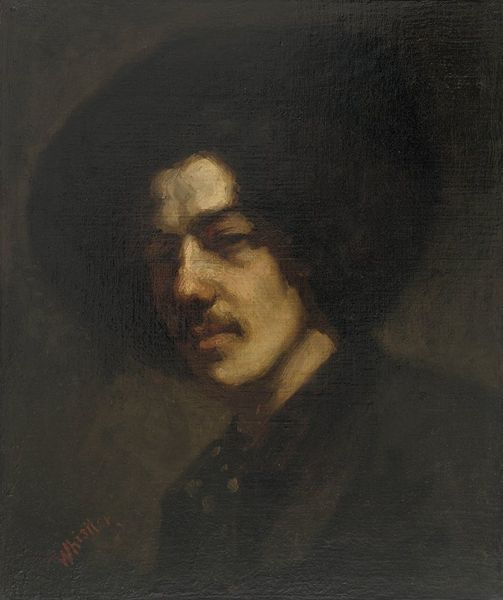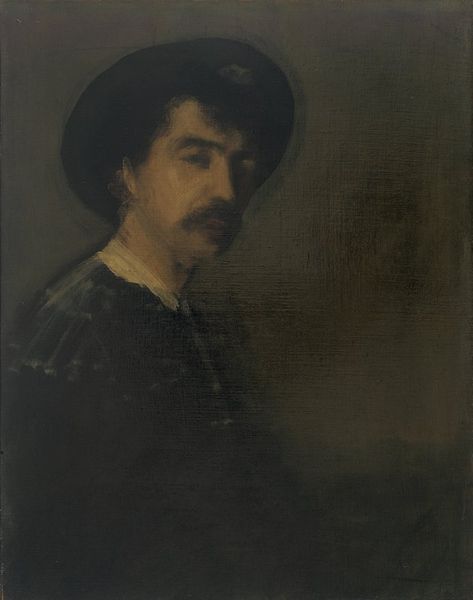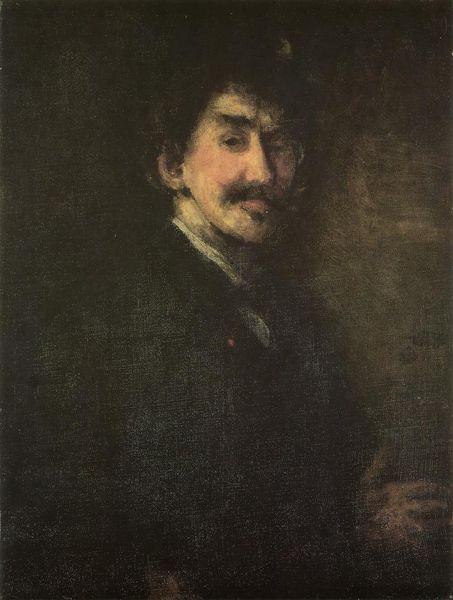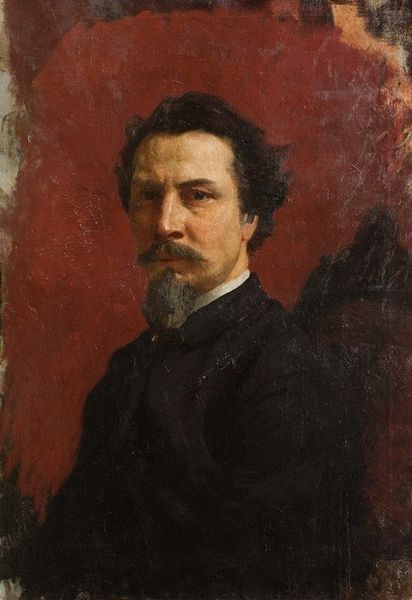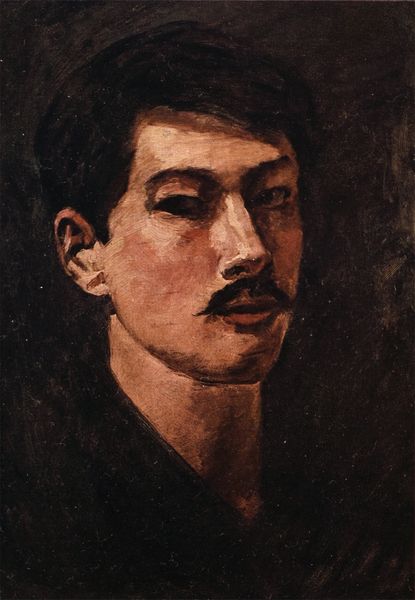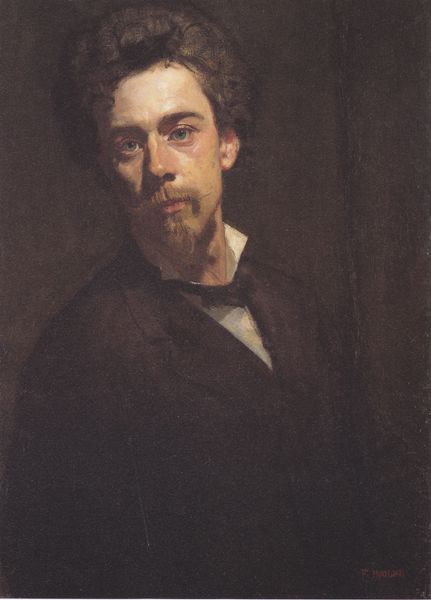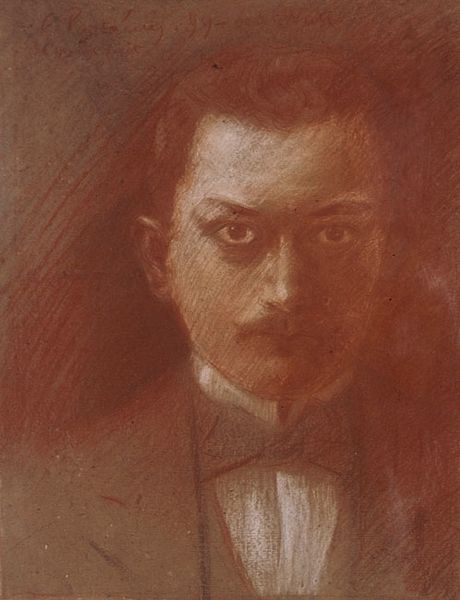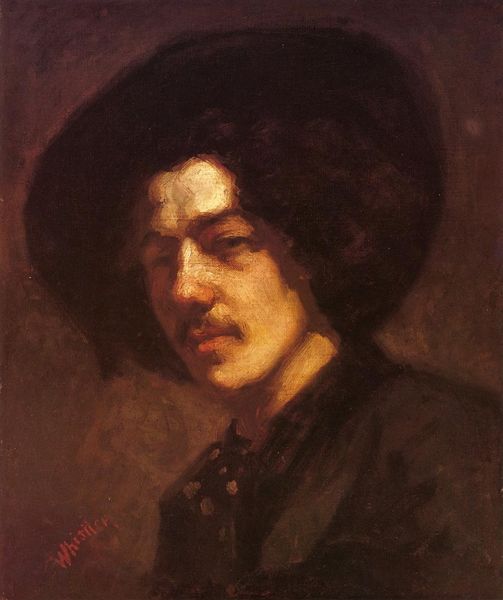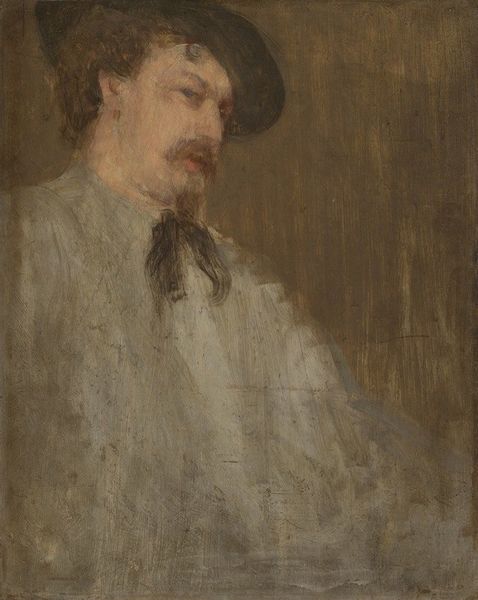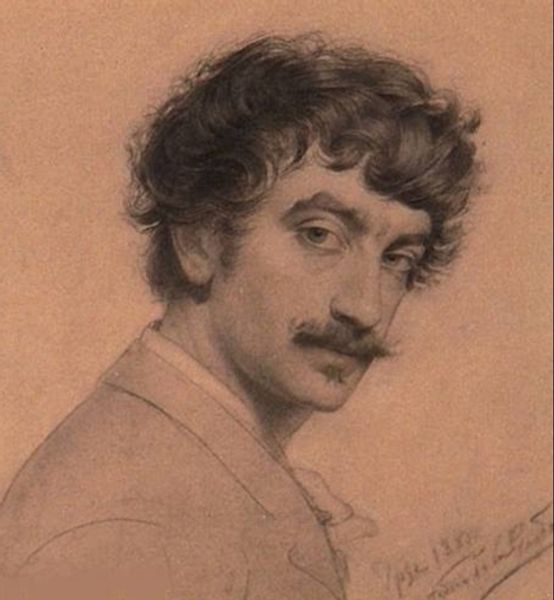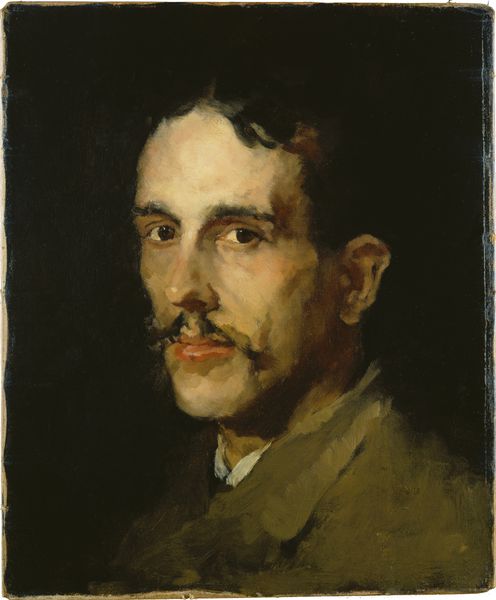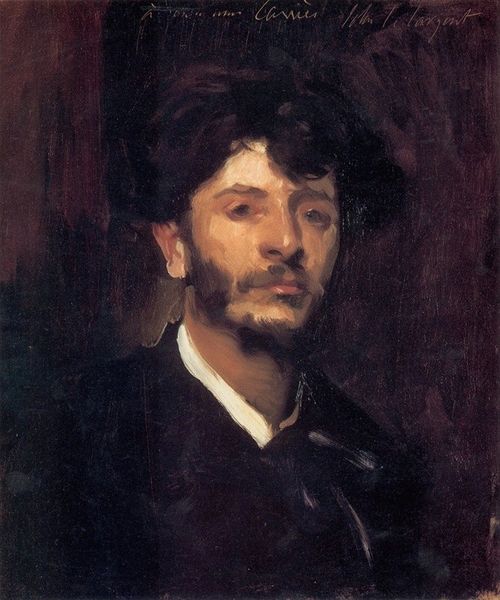
Copyright: Public Domain: Artvee
Curator: Henri Fantin-Latour painted this portrait of James McNeill Whistler in 1865. Consider the intersection of artistic communities in mid-19th century Paris, particularly the dynamic between realist and impressionist circles. Whistler himself occupies an interesting position, as does Fantin-Latour, navigating the currents of modernity. Editor: My initial reaction is one of subdued intensity. The somber color palette and the almost blurred edges create a mysterious and slightly melancholic aura. It's the opposite of a grand, heroic portrait. Curator: Indeed. We might read the painting as a negotiation of artistic identity and male representation. Whistler was a complex figure, and Fantin-Latour captured a sense of that internal struggle and the broader bohemian milieu. Think of Baudelaire’s flâneur and the male gaze—how do these ideas intersect here? Editor: I'm drawn to the interplay of light and shadow, which gives his face form. The softness is almost sculptural, like modeling with tonal variation rather than hard lines. His gaze feels direct. Is it confronting or melancholic? Curator: Considering their complex friendship and the evolving art world at the time, that directness can be interpreted as a challenge to established norms, both artistic and social. There’s a performative aspect to Whistler’s persona that the portrait hints at. I'm not certain Fantin-Latour intended the confrontational impression, but in retrospect the idea seems important. Editor: I hadn’t thought of performance, but now I notice it in the somewhat self-conscious pose. The composition, however, seems more accidental than intentional, though maybe I'm biased given that Whistler would be considered of an earlier time than pure impressionism. Curator: Fantin-Latour occupied a transitional space, negotiating between realism and the emerging Impressionist aesthetic. Editor: Overall, my focus stays with the texture. How the strokes define and diffuse at the same time. This captures a fugitive likeness of character, almost an echo rather than an embodiment. Curator: The image invites viewers to reflect on the relationships between artists and their place in shifting cultural landscapes. The artist certainly makes some subtle commentary on the human form. Editor: For me it will always remain a subtle symphony of tone. A close tonal reading of it makes one start thinking of music.
Comments
No comments
Be the first to comment and join the conversation on the ultimate creative platform.
